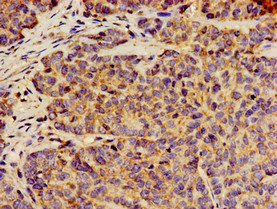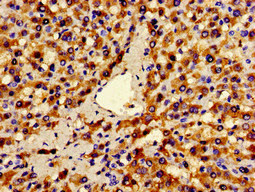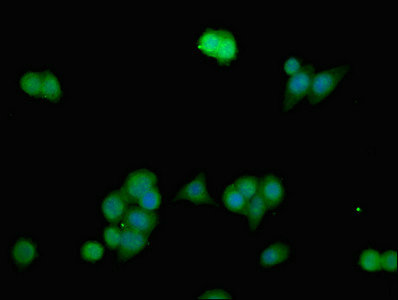Full Product Name
Rabbit anti-Homo sapiens (Human) ANO1 Polyclonal antibody
Alternative Names
ANO 1 antibody; ANO1 antibody; ANO1_HUMAN antibody; Anoctamin 1 antibody; Anoctamin 1 calcium activated chloride channel antibody; Anoctamin-1 antibody; Anoctamin1 antibody; Ca2+ activated Cl- channel antibody; Calcium Activated Chloride Channel antibody; Discovered on gastrointestinal stromal tumors protein 1 antibody; DOG 1 antibody; DOG1 antibody; FLJ10261 antibody; Membrane protein antibody; Oral cancer overexpressed 2 antibody; Oral cancer overexpressed protein 2 antibody; ORAOV 2 antibody; ORAOV2 antibody; TAOS 2 antibody; TAOS2 antibody; TMEM 16A antibody; TMEM16A antibody; Transmembrane protein 16A (eight membrane spanning domains) antibody; Transmembrane protein 16A antibody; Tumor amplified and overexpressed sequence 2 antibody; Tumor-amplified and overexpressed sequence 2 antibody
Immunogen
Recombinant Human Anoctamin-1 protein (1-151AA)
Immunogen Species
Homo sapiens (Human)
Conjugate
Non-conjugated
The ANO1 Antibody (Product code: CSB-PA804805LA01HU) is Non-conjugated. For ANO1 Antibody with conjugates, please check the following table.
Available Conjugates
| Conjugate |
Product Code |
Product Name |
Application |
| HRP |
CSB-PA804805LB01HU |
ANO1 Antibody, HRP conjugated |
ELISA |
| FITC |
CSB-PA804805LC01HU |
ANO1 Antibody, FITC conjugated |
|
| Biotin |
CSB-PA804805LD01HU |
ANO1 Antibody, Biotin conjugated |
ELISA |
Purification Method
>95%, Protein G purified
Concentration
It differs from different batches. Please contact us to confirm it.
Buffer
Preservative: 0.03% Proclin 300
Constituents: 50% Glycerol, 0.01M PBS, pH 7.4
Tested Applications
ELISA, IHC, IF
Recommended Dilution
| Application |
Recommended Dilution |
| IHC |
1:20-1:200 |
| IF |
1:50-1:200 |
Storage
Upon receipt, store at -20°C or -80°C. Avoid repeated freeze.
Lead Time
Basically, we can dispatch the products out in 1-3 working days after receiving your orders. Delivery time maybe differs from different purchasing way or location, please kindly consult your local distributors for specific delivery time.
Usage
For Research Use Only. Not for use in diagnostic or therapeutic procedures.









